|
During pregnancy, a woman’s body will change more in nine months than it’s likely to change during any other life stage. Because of these changes, pregnant women are generally encouraged to rest and enjoy “eating for two”. For dancers, taking it easy is not always ideal or even possible. Pre-professional and professional dancers often continue to train until their due date and will return back to the studio soon after delivery. What does training while pregnant involve? Will dancing while pregnant harm an unborn child?
4 Comments
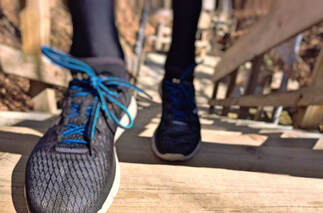 Cardiovascular demand during dance performances and rehearsals is much greater than during dance classes. Because of the low requirement during technique classes, many dancers lack adequate aerobic power. Therefore, supplementary cardiovascular training is needed to improve aerobic capacity and reduce the risk of injury during performances. High-intensity interval training, which involves short bursts of intermittent exercise, is recommended to meet the strain of performance (Wyon et al, 2005). The goal is to get your heart rate to a maximum level, and then recover quickly (Howell, L, 2019). Designing a cardiovascular program:
Benefits of cardiovascular training:
Regardless of your dance goals, incorporating cardiovascular training can have lasting benefits for health and overall fitness level. References:
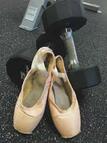 Resistance training is essential for facilitating muscular development and fostering strength gains in young dancers. Rapid growth periods during adolescence can lead to reduced strength, impaired balance, and decreased flexibility, which can alter technical ability and increase the risk of injury [1]. Thus, it is recommended to start strength training before puberty to reduce the risk of injury and promote strength gains. Muscular development in adolescents: Peak gains in strength typically occur one year after peak height velocity is reached. Late maturers may gain strength later and may not obtain peak strength until their 20s or30s. Differences in hormone levels account for differences in strength gains between boys and girls. Testosterone, growth hormone, and insulin-like growth factors account for increased muscle bulk and accelerated strength in boys. Increased muscle mass typically proceeds strength gains [2]. Key aspects to developing a strength program: It is important to target areas of individual weakness when designing a strength program. Pelvic stabilization,, gluteal, and abdominal strengthening are keys to improving neuromuscular control of the lower extremities. A progressive resistance program can increase muscular strength/endurance in as little as 6 to 8 weeks (Stalder, M). Most programs require 2 to 3 days of resistance training per week to see strength gains. Performing high repetitions with lower weight will target muscle endurance, whereas performing fewer repetitions with higher weight will target muscle strength. It is essential to have adequate supervision by a healthcare professional during training to ensure proper progression of training loads and correct technique to avoid injury [4]. Benefits of strength training:
References 1) Delegete, A. Health Considerations for the Adolescent Dancer. A webinar through the Harkness Center for Dance Injuries. Accessed September 23, 2018. 2) Haff, Gregory G. Essentials of Strength Training and Conditioning 4th Edition 2016. Pages 144-145. (https://www.open.edu/openlearn/ocw/pluginfile.php/617068/mod_resource/content/1/e217_1_excf223_nsca_chapter7_p144_145.pdf) 3) Stalder, M. A., Noble, B. J., & Wilkinson, J. G. (1990). The effects of supplemental weight training for ballet dancers. The Journal of Strength & Conditioning Research, 4(3), 95-102. 4) Stracciolini, A., Hanson, E., Kiefer, A. W., Myer, G. D., & Faigenbaum, A. D. (2016). Resistance training for pediatric female dancers. Journal of Dance Medicine & Science, 20(2), 64-71. Strength, precision, and artistry set you apart at an audition. Optimal nourishment and rest is important. Audition at your best by staying in peak shape with these helpful tips.
Before audition day:
Skills to focus on during your audition:
References: Koutedakis, Y. (2000). " Burnout” in Dance: the physiological viewpoint. Koutedakis, Y., & Jamurtas, A. (2004). The dancer as a performing athlete. Sports Medicine, 34(10), 651-661. 9/10/2018 2 Comments Am I ready for pointe work?A dancer’s progression to pointe work is a much anticipated moment. It is completely normal to be excited about this milestone, but it is extremely important not to rush into pointe work. There are a variety of factors that need to be considered to ensure that a dancer is ready to sufficiently meet the demands of pointe work.
Criteria for pointe readiness based on expert recommendation:
What are the risks if I start too early? If the dancer begins pointe work without adequate range of motion and/or neuromuscular control, they can hinder proper technique development, foster bad habits, and potentially increase the amount of stress on the developing bones as well as the surrounding musculature. There is rapid bone growth and remodeling between the ages of 9-15 years old. During this time, growth plates are weaker than the surrounding bone, making them less resistant to different forces and more susceptible to injury. In addition, there are neuromuscular changes that occur as the dancer accommodates to rapid growth. The dancer takes time to adapt to changes in strength, flexibility, and proprioception, which ultimately influences motor control and performance en pointe. Therefore, chronological age cannot be a sole marker for pointe readiness (Richardson 2017, Shah 2009). It is important to communicate with your ballet teacher regarding the progress of your technique and whether you meet the criteria to initiate pointe work. Health care professionals (MD, PTs) with a background in dance can assist in conducting pointe readiness screens. *Description of pointe readiness tests:
1) Richardson, M. Principles of Dance Medicine, Functional Tests to Assess Pointe Readiness. A webinar through the Harkness Center for Dance Injuries. Accessed Feb 23, 2017. 2)Bullock-Saxton, J. E., Janda, V., & Bullock, M. I. (1994). The influence of ankle sprain injury on muscle activation during hip extension. International journal of sports medicine, 15(06), 330-334. 3) Richardson, M., Liederbach, M., & Sandow, E. (2010). Functional criteria for assessing pointe-readiness. Journal of Dance Medicine & Science, 14(3), 82-88. 4) Shah, S. (2009). Determining a young dancer's readiness for dancing on pointe. Current sports medicine reports, 8(6), 295-299. 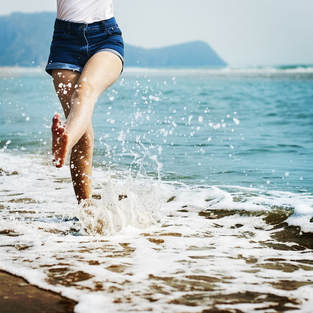 Rest is essential for recovery and healing. It is a recommended to take a couple weeks off after a summer intensive. Adjustments in food intake should be made during these rest periods. Typically, one week is not enough time for your metabolic rate to decrease or for lean mass to dissipate significantly. However, durations longer than one week can result in loss of muscle mass and fat gain if you're not supplementing with resistance training and/or adjusting calorie intake. Plan to make small, simple changes to account for the reduced calorie expenditure when you're not dancing. Be careful not to overcompensate with extreme calorie restriction.This is counterproductive and can cause muscle loss, illness, and injury when you begin training again. What adjustments should be made to diet during the off-season?
Rather than restricting calories during vacation or off-season, consider cross-training with cardio and resistance training. Low-impact, moderate-intensity cardio such as swimming or fast walking are excellent options to allow for extra calorie burning and promote muscle retention. Walking at ~3.8 to 4 miles per hour (3 to 4 miles/day) or swimming for 30 minutes at a moderate intensity are good options. Add light resistance training with weights, Pilates, or yoga while on a break from dance in order to maintain flexibility and promote muscle gain. Enjoy your summer and remember that you deserve a break! 5/9/2018 0 Comments Dancing Through Burnout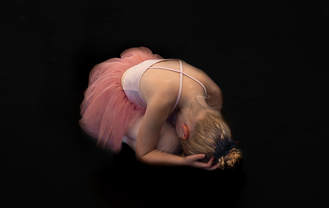 Burnout or overtraining can be characterized by:
Risks for burnout and injury:
Signs/symptoms of burnout:
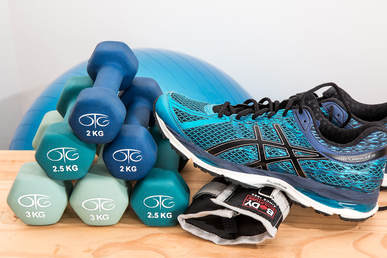 Solutions and setting realistic expectations: 1) Allow for full rest days in between heavy training days. This will provide adequate time for tissue healing and recovery and prevent further tissue damage. 2) Set mandatory rest periods after performance seasons and summer intensives. It is recommended that a dancer takes a rest period of 3-5 weeks off from dance. Research shows that rest periods improve/maintain strength, flexibility, and aerobic capacity. Cross training can be performed during rest periods (Koutedakis 2004). 3) Get adequate sleep. Dancers may need up to 9 to 10 hours of sleep per night during intense training periods. Set an early bedtime for yourself and try to avoid screen time distractions before bed. 4) Eat a balanced diet. It is important to have adequate nutrition to boost your immune system and optimize your performance. 5) Don’t work through fatigue, illness, or injury. 6) When returning to dance, slowly ramp up activity load. Consider starting with a modified dance schedule when returning from rest periods. 7) Increase endurance. Most injuries occur when a dancer is fatigued and therefore it is important to improve aerobic capacity to delay fatigue. About 20 minutes of moderate to vigorous cardiovascular exercise such as swimming or cycling can bring about aerobic fitness increases. Swimming is a preferable choice for improving endurance over activities such as running or cycling, which place much more demand on the lower extremities (Koutedakis 2004). 8) Increase muscle strength. Body conditioning, weight lifting, and pilates are excellent for increasing lean muscle mass. 9) Address the signs of burnout early to avoid prolonged symptoms. 10) Consider reducing your schedule intensity if you are dancing > 5 hours a day or > 20 hours per week. REFERENCES: 1) Koutedakis, Y. (2000). " Burnout” in Dance: the physiological viewpoint. 2) Koutedakis, Y., & Jamurtas, A. (2004). The dancer as a performing athlete. Sports Medicine, 34(10), 651-661. 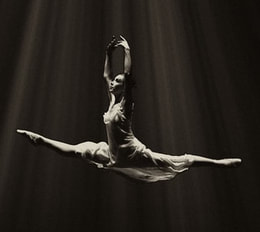 Dance is highly demanding and requires exceptional flexibility, balance, power, agility, coordination, and endurance. To properly execute movements, a dancer assumes positions that place excess stress on bones, muscles, tendons, and ligaments, thus leading to high injury rates. The injury incidence is reported to be as high as 5.6 per 1,000 dancing hours for pre-professional dancers, and 4.44 per 1,000 hours in a company of professional dancers (Allen et al, 2012). In comparison, the injury rate for elite gymnasts is 2.86 per 1,000 hours and 0.69 for novice gymnasts (Saluan et al, 2015). Gymnasts have a higher percentage of traumatic injuries, whereas 75% of the injuries sustained in dance are related to overuse. Overuse injuries are caused by repetitive movements/stress which can lead to micro-injury of the tissue that is being loaded. If the injury rate exceeds the rate of healing/repair, the tissue can become damaged (Sephton, 1998). The majority of dancers are fatigued at the time an injury occurs. This is because fatigue compromises muscle performance, coordination, joint stability, and neural feedback (Liederbach 2012). Overuse injuries tend to be more severe in nature and result in more dance time lost. Lower leg injuries are reported to be between 66 and 78% of the injuries, whereas foot/ankle injury comprises 14 to 57% of all injuries among dancers. Injuries sustained during class and performances are more severe than injuries that occur during rehearsals (Allen 2012). Common risk factors for injury include:
References: 1.Allen, N. Nevill, A. Ballet Injuries: Injury Incidence and Severity over 1 Year. Journal of Orthopaedic and Sports Physical Therapy. Vol 42, number 9, September 2012. 781-790. 2.Saluan, Paul et al. “Injury Types and Incidence Rates in Precollegiate Female Gymnasts: A 21-Year Experience at a Single Training Facility.” Orthopaedic Journal of Sports Medicine 3.4 (2015): 2325967115577596. PMC. Web. 4 Feb. 2018. 3.Sephton, Sharlene. "Foot Injuries in Dancers." ADVANCE for Physical Therapy and Rehab Medicine (1998) Web. 4 Feb. 2018. 4.Liederbach, Marijeanne. "Epidemiology of Injuries in Dance: Biopsychosocial Considerations." Principles of Dance Medicine: Clinical Management of the Dancer Patient. July 12, 2012, New York University Langone Medical Center. 2012. Print. 5. Russell, J. A. (2013). Preventing dance injuries: current perspectives. Open access journal of sports medicine, 4, 199. 6. Allen, N., Ribbans, W. J., Nevill, A. M., & Wyon, M. A. (2014). Musculoskeletal injuries in dance: a systematic review. Int J Phys Med Rehabil, 3(252), 2 |
CategoriesAll Cross Training Injury Prevention Nutrition Recipes Wellness Archives
October 2021
|
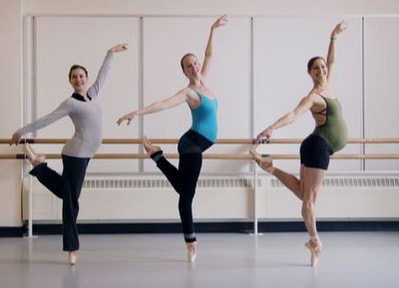
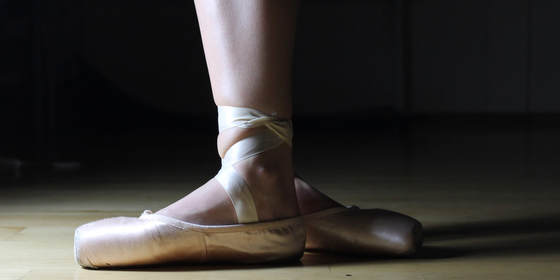
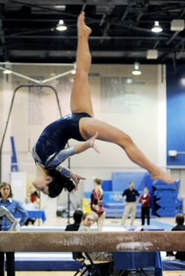
 RSS Feed
RSS Feed